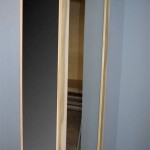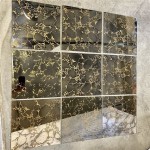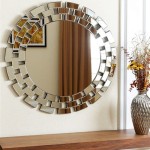Mirror iPhone to Samsung TV: Troubleshooting A No Picture Scenario
Mirroring an iPhone to a Samsung TV can be a convenient way to share content, whether it's photos, videos, presentations, or even games. The process typically involves utilizing either Apple's AirPlay technology or a third-party mirroring app. However, users commonly encounter a frustrating issue: the iPhone connects to the TV, appears to be mirroring, but no picture displays on the Samsung TV screen. This absence of a picture, while the connection seems active, requires a systematic approach to diagnose and resolve.
The failure to display the iPhone's screen on the Samsung TV despite a successful connection can stem from various sources. These sources range from simple configuration oversights to more complex network connectivity problems and even compatibility limitations. Understanding the potential causes is crucial for effective troubleshooting. This article will outline the common culprits and provide detailed steps to address them, ensuring a successful mirroring experience.
Understanding AirPlay and Screen Mirroring Protocols
Before diving into specific troubleshooting steps, it's important to understand the underlying technologies at play. AirPlay, developed by Apple, is a proprietary protocol allowing wireless streaming of audio and video between Apple devices and compatible receivers, including many Samsung TVs. It relies on a Wi-Fi network and requires both the iPhone and the Samsung TV to be connected to the same network. When AirPlay functions correctly, the iPhone sends a digital stream of its screen content to the TV, which then decodes and displays it. However, various factors can interrupt this process, leading to a no-picture scenario.
Screen mirroring, on the other hand, is a more general term that encompasses various methods of projecting a device's screen onto a larger display. While AirPlay is a specific implementation of screen mirroring, other technologies and apps can achieve similar results. Some third-party apps utilize Miracast, a peer-to-peer wireless screencast standard, or other proprietary protocols. The use of these apps often involves downloading and installing software on both the iPhone and the Samsung TV (if available) to facilitate the connection and mirroring process.
The choice between AirPlay and a third-party app depends on several factors, including the specific models of the iPhone and Samsung TV, the desired features, and the network infrastructure. When troubleshooting a no-picture issue, it is important to identify which method is being used and tailor the troubleshooting steps accordingly.
Troubleshooting Steps: Addressing Common Causes of a Blank Screen
When an iPhone successfully connects to a Samsung TV for screen mirroring but no picture appears, a series of troubleshooting steps are necessary. These steps should be performed in a logical order, starting with the simplest and most common causes and progressing to more complex scenarios.
1. Verify Basic Connections and Settings:
The first step is to ensure that both the iPhone and the Samsung TV are connected to the same Wi-Fi network. This seems obvious, but it’s a common mistake. Double-check the Wi-Fi settings on both devices. If either device is connected to a different network, or if one is connected to Wi-Fi and the other is not, the mirroring process will likely fail. Furthermore, ensure that the Wi-Fi network is functioning correctly and has sufficient bandwidth. Slow or unstable Wi-Fi can impede the mirroring process.
Next, verify the input source on the Samsung TV. Make sure the TV is set to the correct input source (e.g., HDMI, AirPlay) that corresponds to the connection type being used. If the TV is set to the wrong input, it will not display the iPhone's screen even if the connection is established.
Also, confirm that AirPlay is enabled on the Samsung TV. Navigate to the TV's settings menu and look for the AirPlay settings. Ensure that AirPlay is turned on and that any required security settings, such as a passcode, are configured correctly. If a passcode is required, make sure the correct passcode is entered on the iPhone when prompted.
On the iPhone, check the Screen Mirroring settings in the Control Center. Swipe down from the top-right corner of the screen (or up from the bottom on older iPhones) to access the Control Center. Tap the Screen Mirroring icon and select the Samsung TV from the list of available devices. If the TV is already selected, try disconnecting and reconnecting to see if this resolves the issue.
Finally, ensure that the volume on both the iPhone and the Samsung TV is turned up and not muted. While the primary issue is the lack of a picture, a muted volume can sometimes mask other underlying problems.
2. Check for Software Updates:
Outdated software on either the iPhone or the Samsung TV can lead to compatibility issues and mirroring problems. Ensure that both devices are running the latest available software updates. On the iPhone, go to Settings > General > Software Update to check for and install any available updates. On the Samsung TV, navigate to the settings menu and look for the software update option. The location of this option may vary depending on the TV model.
Software updates often include bug fixes and performance improvements that can resolve mirroring issues. Updating both devices to the latest software versions is a crucial step in the troubleshooting process.
3. Address Network Connectivity Issues:
Network connectivity problems are a common cause of mirroring failures. Even if both devices are connected to the same Wi-Fi network, there may be underlying network issues that are preventing the mirroring process from functioning correctly.
Start by restarting the Wi-Fi router. Unplug the router from the power outlet, wait for 30 seconds, and then plug it back in. This will often resolve temporary network glitches that may be interfering with the mirroring process.
If restarting the router does not resolve the issue, try resetting the network settings on the iPhone. Go to Settings > General > Transfer or Reset iPhone > Reset > Reset Network Settings. This will erase all saved Wi-Fi passwords and other network settings, so you will need to reconnect to your Wi-Fi network after performing this reset. However, it can often resolve network-related issues that are preventing mirroring from working correctly.
In some cases, other devices on the network may be consuming excessive bandwidth, which can interfere with the mirroring process. Try disconnecting other devices from the network to see if this improves the mirroring performance. If the problem persists, consider upgrading to a faster Wi-Fi router or contacting your internet service provider to troubleshoot network issues.
Advanced Troubleshooting: Addressing Device Specific Problems
If the basic troubleshooting steps do not resolve the no-picture issue, it may be necessary to investigate more advanced troubleshooting techniques. These techniques often involve addressing device-specific problems or limitations.
1. AirPlay Restrictions and Parental Controls:
Check the AirPlay settings on both the iPhone and the Samsung TV for any restrictions or parental controls that may be preventing the mirroring process from working correctly. On the Samsung TV, navigate to the AirPlay settings and ensure that there are no restrictions in place that are blocking the iPhone from connecting. Similarly, on the iPhone, check the Screen Time settings for any content restrictions that may be preventing the mirroring process from functioning.
2. HDMI Connection Conflicts:
If you are using an HDMI adapter to connect the iPhone to the Samsung TV, there may be a conflict with other HDMI devices connected to the TV. Try disconnecting other HDMI devices to see if this resolves the issue. Also, ensure that the HDMI cable is securely connected to both the iPhone and the Samsung TV. A loose or damaged HDMI cable can cause mirroring problems.
3. App-Specific Compatibility Issues:
Some apps may not be fully compatible with AirPlay or screen mirroring. Try mirroring a different app to see if the problem is specific to a particular app. If the problem is specific to a particular app, contact the app developer for assistance.
4. Factory Reset:
As a last resort, consider performing a factory reset on either the iPhone or the Samsung TV. A factory reset will erase all data and settings on the device, so be sure to back up any important data before performing a factory reset. On the iPhone, go to Settings > General > Transfer or Reset iPhone > Erase All Content and Settings. On the Samsung TV, navigate to the settings menu and look for the factory reset option. The location of this option may vary depending on the TV model.
Performing a factory reset can often resolve persistent mirroring issues that are caused by corrupted software or settings. After performing a factory reset, you will need to set up the device from scratch and reconnect to your Wi-Fi network.
By systematically following these troubleshooting steps, it should be possible to identify and resolve the underlying cause of the no-picture issue when mirroring an iPhone to a Samsung TV. Remember to start with the simplest and most common causes and progress to more complex scenarios. If the problem persists, consider contacting Apple or Samsung support for further assistance.

3 Ways To Screen Mirror Iphone Samsung Tv No Apple Required Normal 2024

How To Connect Phone Tv Screen Mirror Iphone A Samsung Easy Setup

5 Ways To Screen Mirror Iphone Samsung Tv No Apple Required

How To Screen Mirror Iphone Samsung Smart Tv

Screen Mirroring Iphone To Samsung Tv Not Working Solved

Screen Mirroring Iphone To Samsung Tv Wirelessly No Apple Required 2024

4 Easy Ways To Mirror Iphone Samsung Tv For Free

How To Screen Mirror Iphone Your Samsung Tv

3 Ways To Screen Mirror Iphone Any Tv No Apple Required 2024

Now You Can Stream Iphone To Samsung Smart Tvs Without Airplay Updated Apple Must







